Nostalgia: according to one dictionary, it’s ‘a wistful or excessively sentimental yearning for a return to or of some past period or irrecoverable condition’.
However you define it, there’s no denying there’s a lot of it about these days, from politicians selling us bucolic visions of the past to music and fashion industries that, at the moment at least, appear to be knee-deep in the 1990s.
Yet nowhere is the feeling more pervasive than the automotive sector, where the urgency of the climate crisis and the looming all-in adoption of electric cars is making many buyers keen to recapture motoring memories that were filled with a greater sense of freedom and environmental innocence, when hydrocarbons were happily hurled about, the road ahead was always open and the future always seemed brighter.
You can see its effect in the steadily rising values of 1980s and 1990s ‘modern classics’, but its influence is most obvious in the skyrocketing popularity of the ‘restomod’.
These restored but tweaked and modified machines aim to infuse the retro appeal of their original subjects with a sheen of modernity that should make them go, stop and steer like a much newer machine – because, let’s face it, on the whole old cars tend to be dynamically, um, suboptimal.
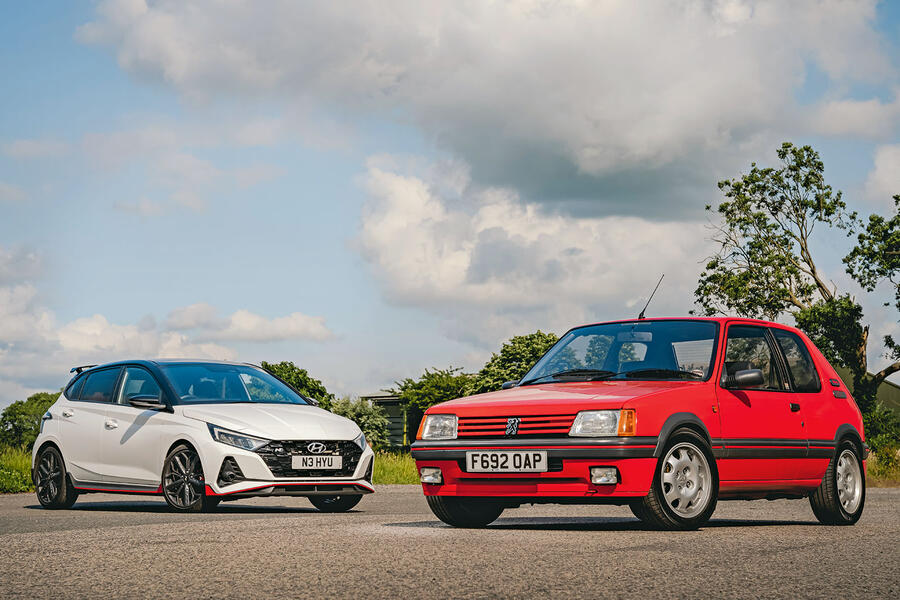
However, there’s no escaping the fact that many of these cars are aimed at clientele with considerable means, with cars such as the Singer DLS Turbo perhaps best highlighting this excess-all-areas approach to conspicuous consumption.
But, between the Reebok Hyundai i20N and brogues-on-steriods Tolman 205 GTI, which is best? Read on to find out...
Introducing the Tolman 205 GTI and Hyundai i20N
Quick links: Design - Powertrains - Interior - Driving dynamics - Verdict - Specs
If Singer isn't for you, the old and new can still be melded in a less-than-ostentatious way, which brings us to the door of Tolman Engineering, on a small industrial estate just outside Rugby in Warwickshire.
We’re here to drive Tolman’s sympathetic take on the restomod concept, which aims to blend the looks, character and feel of a historic hot hatch high-water mark with enough bang-up-to-date airs and graces to make it a realistic daily runaround, albeit a rather special one: step forward the Tolman Edition 205 GTi.
Can it really be an everyday alternative to a modern hot hatch? To find out, we have brought along our current swift supermini star, the Hyundai i20 N.
The fact that both deliver around 200bhp, are capable of scrabbling to 60mph in under seven seconds and will crack 140mph only adds intrigue to a pairing that is both disparate and closely matched.
Tolman 205 GTI vs Hyundai i20N: design
However you look at it, the Tolman 205 GTi plays the restomod game to perfection, eschewing extravagant add-ons in favour of period-correct looks. To be fair, even as it celebrates its 40th, the 205 still looks pretty much perfect, with its pert, Pininfarina lines almost beyond improvement. (Peugeot certainly didn’t try too hard over the car’s decade-long lifespan, save from some tweaked tail-lights in the early 1990s.)
Shrinkflation is all the rage these days, but in the supermini sector cars have only become larger and larger, so the Hyundai dwarfs the elderly French charger.
The i20 N’s more aggressive lines and extra body addenda leave onlookers in no doubt about its go-faster credentials, although some hot hatch markers are enduring and universal, with both our contenders sporting a de rigueur red stripe.
![]()
Yet while the 205 looks standard on the surface, under the skin it’s (almost) a completely different animal to the 1980s original.
The first Tolman-tuned Peugeot appeared a few years ago but was merely a side project for company founder Chris Tolman as he sought to relive memories of the stock GTi of his youth.
Upgrades to the brakes, suspension and finish of a 1.6-litre example created a car that ‘drove like your memory of a 205, rather than the reality’. The red car here is a much more serious proposition: it is the first customer car and is essentially Tolman’s vision of the ‘ultimate GTi’.
Around 700 hours go into each Tolman GTi. The work includes a complete strip-down, repair and repaint of the body, plus a refresh and retrim of the interior. From here on in the only limit is your imagination – and your budget, obviously.
Tolman 205 GTI vs Hyundai i20N: powertrains
For this money-no-object example, that means the standard 130bhp 1.9-litre XU motor now develops 200bhp courtesy of a twin-cam 16-valve head from a 306 GTi-6 (complete with 3D-printed cam cover which mimics that of the 1.8-litre turbo in the legendary 205 T16 Group B machine) and bespoke Motec ECU.
The whole installation is exquisite, with the care and development taken on the power steering installation alone hinting at the quality of the work on show.
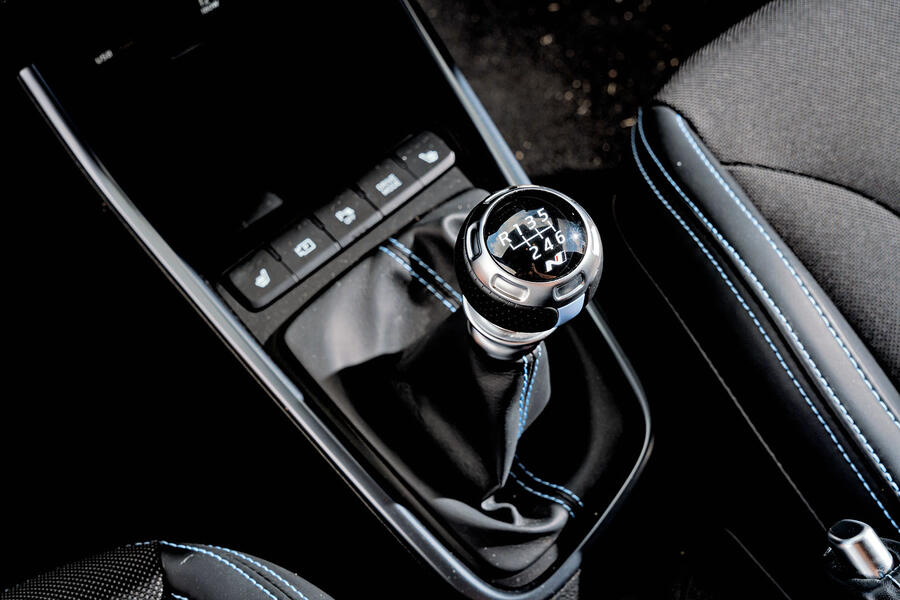
For the chassis there are Bilstein springs and dampers that have been given bespoke tuning, a unique rear anti-roll bar and adjustable front lower arms. There is also a torque-biasing Quaife limited-slip front differential and larger AP Racing brakes squeezed behind iconic 15in Speedline alloys that are wrapped in the latest Michelin Youngtimer tyres (essentially an updated reissue of the Pilot Exalto 2), which mix classic looks with contemporary compounds.
Speaking of period touches, there is also a new, freer-breathing stainless steel exhaust system that retains the original’s familiar turned-down tailpipe. The subtle incorporation of the new with the old continues inside, where at a glance it looks and feels just like it would when rolling out of a Peugeot showroom in 1990.
Tolman 205 GTI vs Hyundai i20N: interior
Yet there’s Alcantara trim for the steering wheel and the Blaupunkt stereo hides Bluetooth connectivity, a DAB radio and a discreet subwoofer. It’s also fully retrimmed with fresh seat fabrics and new carpets (bright red, naturally) and protected by remote central locking, an alarm and tracker.
Yet the highlight is the optional Motec LCD instrument cluster that faithfully recreates the original Veglia analogue dials. At the touch of a button (decorated with Peugeot Sport’s tricolore logo), the display switches to mimic that of a 205 T16 (can you guess which homologation special is Tolman’s favourite?) – not even the Hyundai’s snazzy ‘burning ring of fire’ graphic on its TFT display makes you grin as much as this digital detail.

The 205 is shorter and narrower than the i20 but feels roomier from the driver’s seat thanks to thin pillars and a large glass area that create an airy atmosphere and a panoramic view out.
That said, the Hyundai’s driving position is superior, its multi-way adjustable seats and steering wheel, plus better-laid-out pedals, making it easier to get comfortable. Convenience is enhanced by a push-button start, while the cushioned controls, decent levels of NVH and the muscular low-down urge of its 1.6-litre turbocharged engine make it easy for anyone to simply get in and drive.
Tolman 205 GTI vs Hyundai i20N: driving dynamics
That’s not to say the Tolman is tricky – far from it – but from the moment you twist the key, you know the fettled French machine is going to be a more intense experience. The XU engine rasps into life and settles to a familiar hollow idle, but the addition of a racing clutch and the need for some ECU fine-tuning (Tolman is working on it) means a delicate touch is needed for a smooth getaway.
Once rolling, the messages that flood in are at once familiar and new: there’s the same instant response to your right foot despite the Motec ECU ditching a throttle cable for a digital connection, while the Tolman’s throaty exhaust note instantly transports you back to an occasionally reckless youth.
Yet as the revs pile on, the 205 pulls with the sort of vigour that the original could only dream of, while the soundtrack becomes harder and angrier as the needle on the rev counter winds quickly around to 7500rpm.
![]()
The 205’s peak torque of 160lb ft is some 40lb ft shy of the i20 N’s figure and delivered higher up the rev range, but with just 895kg to haul around (the Hyundai is a relative heavyweight at 1190kg), there’s little to choose between the two for traditional hot hatch elastic energy, and the red devil is always snapping at the Korean machine’s heels when the road opens up.
You have to work harder for the performance in the naturally aspirated 205, of course, but the light, snappy action of the five-speed manual gearbox and the accompanying snarling vocals mean this is no hardship.
The same is true of the handling, which has lost some of the old car’s wayward vices but retains its invigorating involvement. Despite assistance, the steering is heftier than the Hyundai’s, yet it’s also more detailed in its feedback, wriggling and writhing just enough to keep you in touch with the asphalt.
Yes, there’s some torque reaction from that limited-slip diff when pouring on power out of tight and lumpy turns, but the rest of the time the messages through the wheel are precise and uncorrupted.
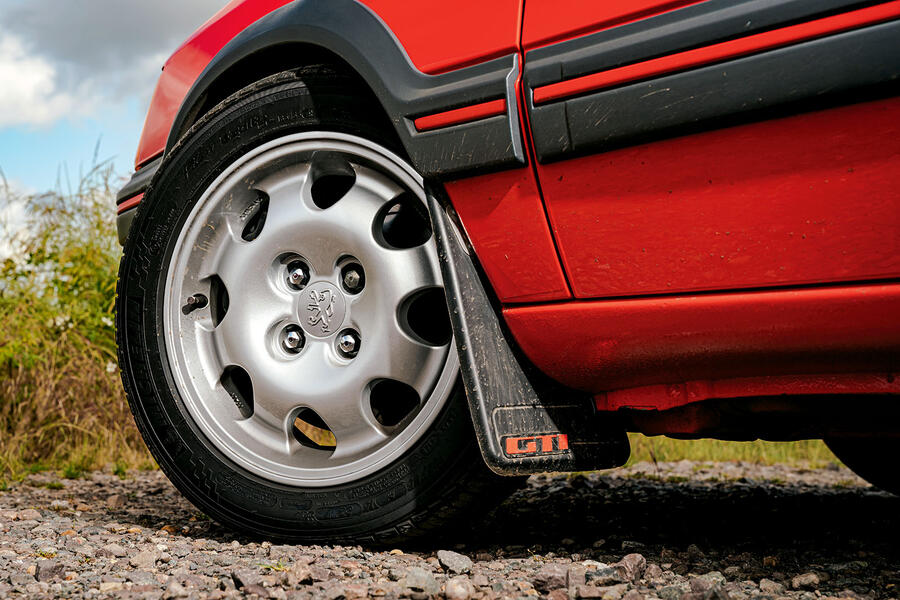
And while it can’t match its younger rival for speed of turn-in or ultimate grip, the Tolman responds more quickly to your inputs than the standard car, diving keenly towards the apex and clinging on hard, even if you have a sudden change of heart and lift of throttle in a hurry; the revised rear suspension and stickier rubber mean the Tolman is only tail-happy when you want it to be. The brakes are superb too, offering similar feel, progression and power to the Hyundai’s set-up, albeit without the safety net of ABS.
Yet perhaps the Tolman’s dynamic standout is the way it combines its fruit-fly agility and even-keel corning attitude with a supple ride, which is particularly impressive when you consider the 205’s minimal mass.
The stiff-legged i20 has cast-iron control, but it also feels like it’s pummelling the road into submission while the GTi flows over the surface, filtering out the nastiest imperfections. It is quite a trick and testament to Tolman’s chassis-whispering abilities.
Tolman 205 GTI vs Hyundai i20N: verdict
This 205 does as promised by distilling the energy and excitement of the original into a package with cutting-edge dynamics. Does that make it a genuine alternative to the i20? As a pure driver’s machine, yes, and then some.
The Hyundai’s limits are higher, its ultimate body control is tighter and its performance is more accessible, yet while it’s a hoot to hoon, it can’t deliver the same laugh-out-loud fun as the 205 or capture your heart in the same way. From the moment you clap eyes on it to the second you shut the door and walk away – with more than just one backward glance – the Tolman captivates like few modern machines can.
As an everyday driver, however, the situation is reversed. The Tolman could take mundane use in its stride, but even with the updates it’s a more raucous companion that can’t match the Hyundai’s refinement, creature comforts or low-effort ease of use. And there’s the thorny issue of price.
This is one of the more affordable restomods, but prices start at around £60,000, plus the cost of a donor. This car? You will need to double that amount. That’s a serious chunk of change, but there’s no doubt the beautifully finished and exquisitely realised Tolman justifies the asking price.
Yet it also serves to remind what brilliant value the £26,530 Hyundai is and why it’s one of the driver’s car bargains of the decade. A hot hatch great like the Peugeot? If we see restomod examples appearing four decades from now, we’ll know the answer.
Winner
1st. Hyundai i20N
It's tight, raw, and raucous, with an additional layer of refinement to make it easier to live with. Exceptional value, too.
2nd. Tolman 205 GTI
Fizzy excitement of the original is funneled into a beautifully-riding package for the 21st century, but it can't match the i20 for dynamics or refinement
Specs
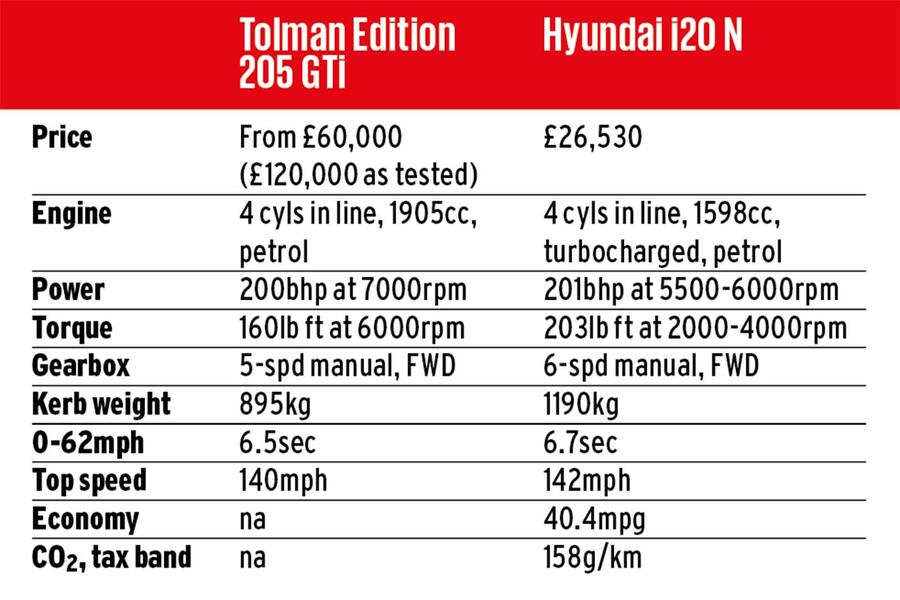


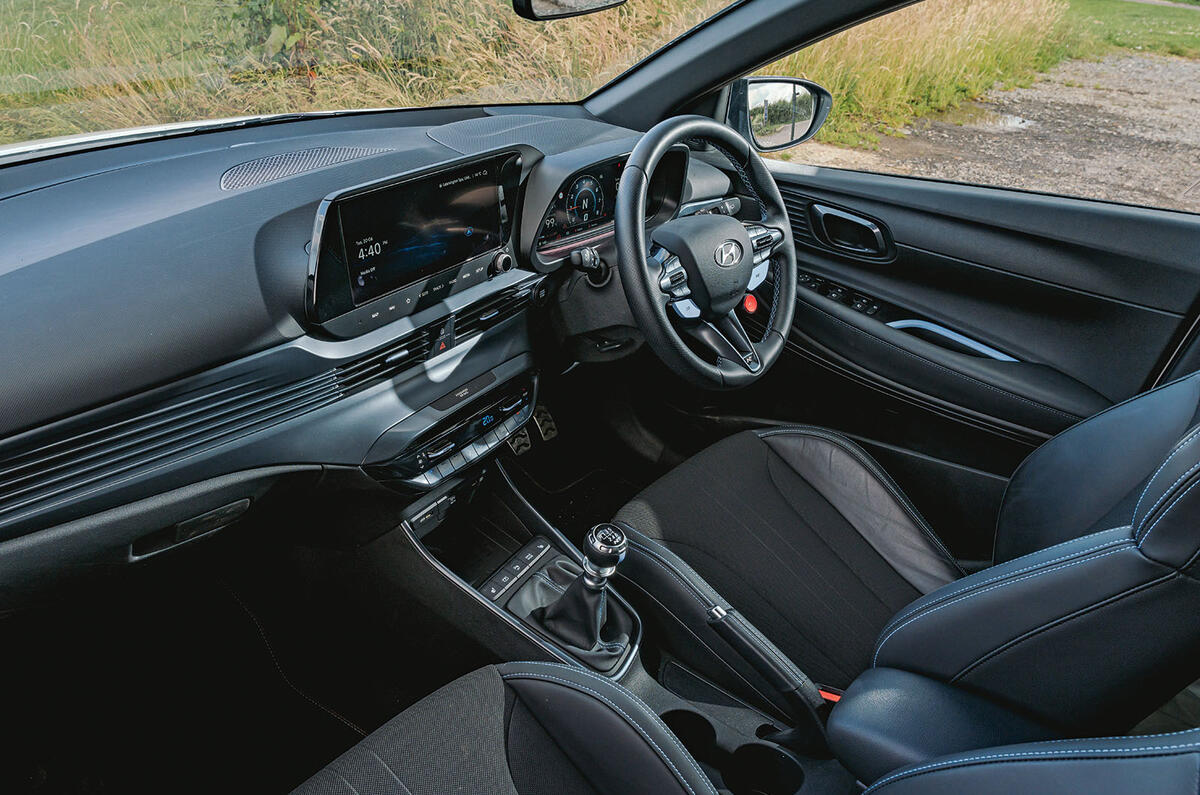

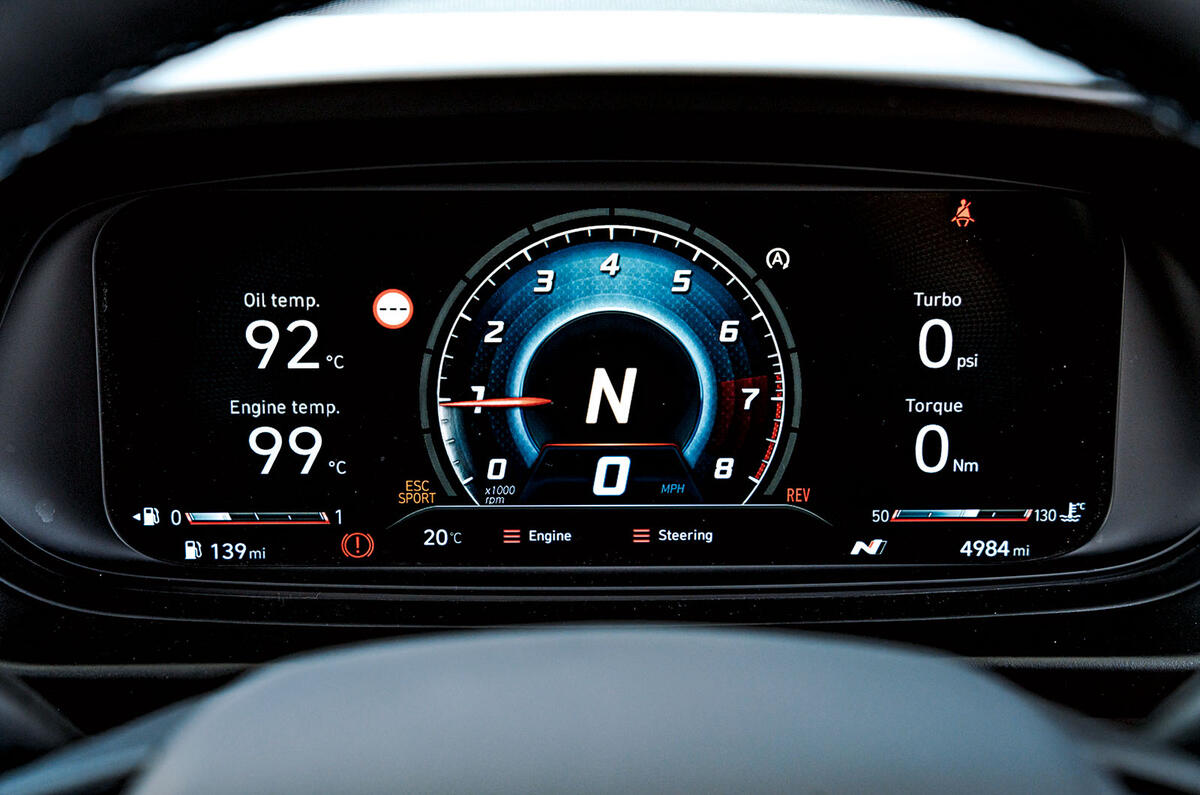

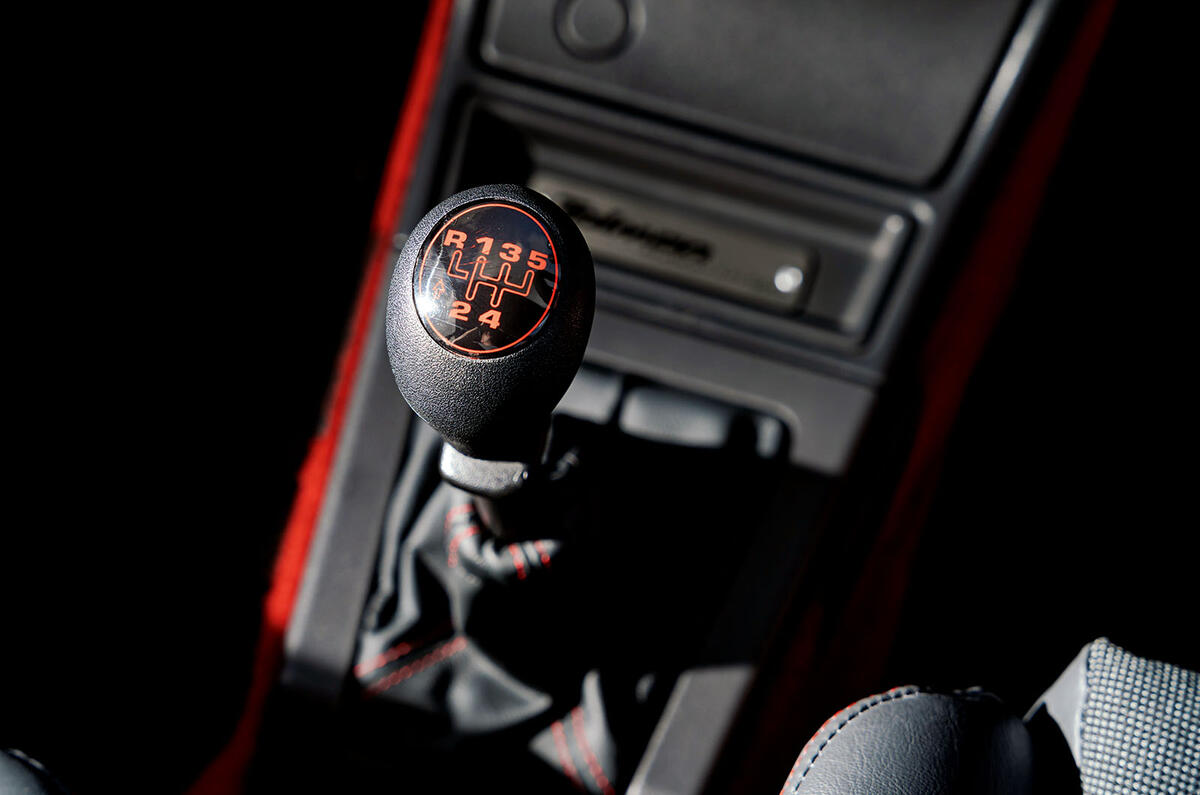
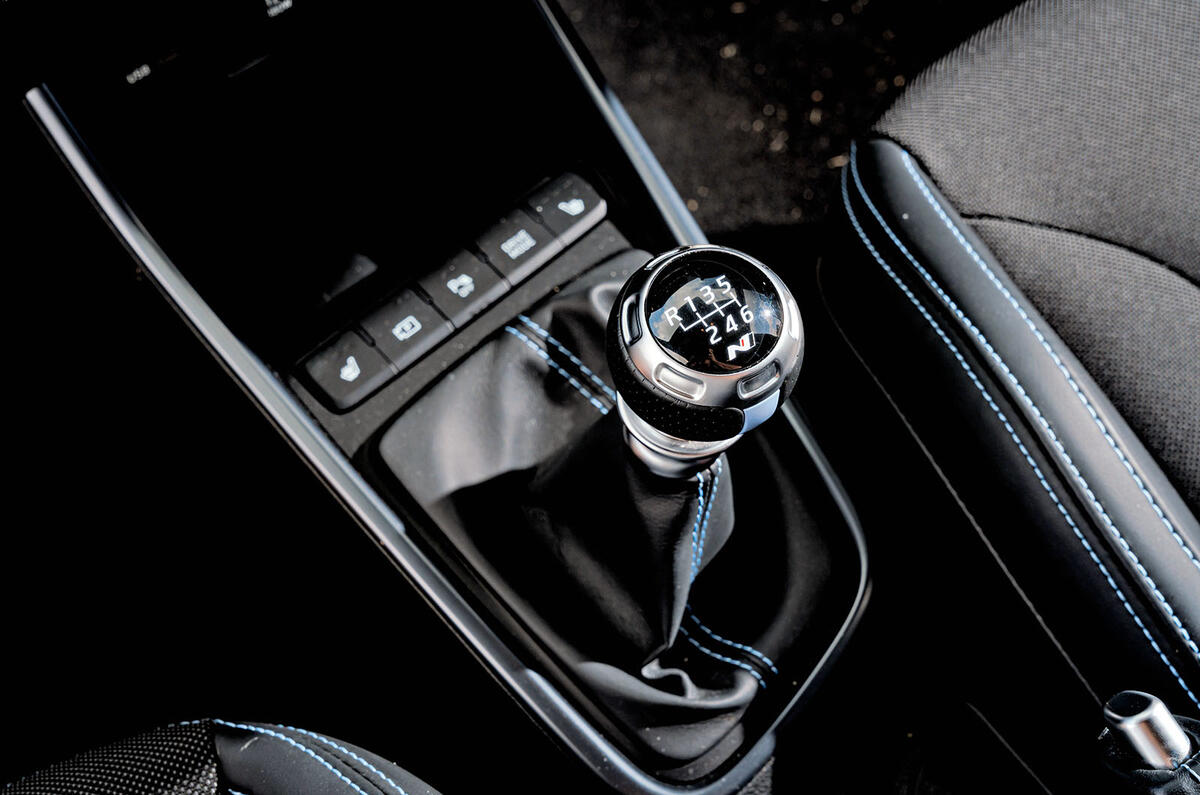
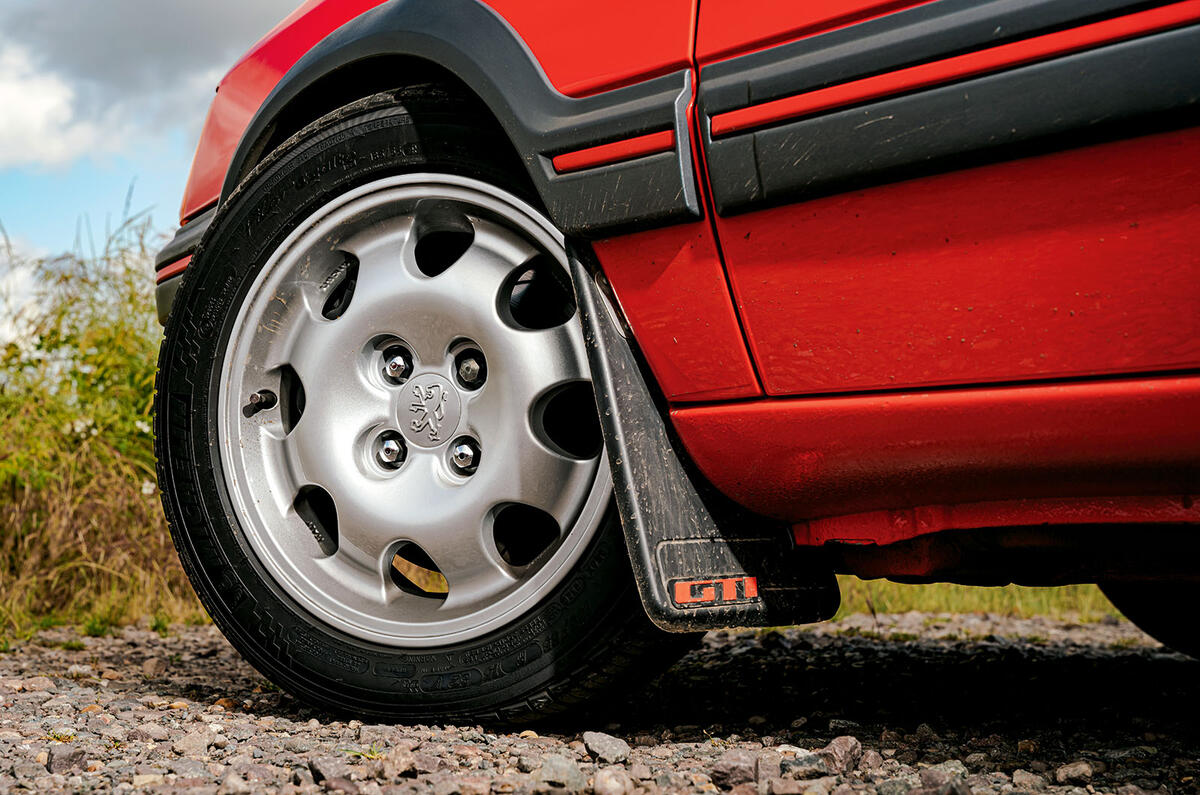

















Join the debate
Add your comment
I remember when there wasn't nostalgia, ahhh, those were the days :-p
Perfect exmple of how good a 3-door hot hatch looks compared to the more frumpy, family car look of a 5-door, which relies so much on its "aggressive" additions.
Either build a restomod as was,or as here, stick an up to date chassis and ancillaries underneath the old body, whatever you choose doesn't matter.
I think it's the same with the GTi, it looks more aggressive/assertive than the standard car with its subtle body kit/addenda.
They are both using the same hot hatch tropes to make them stand out as the sporty version, but I agree 3 door cars do look good, but on the i20, seeing as they don't do a 3 door at all, I am not bothered by the 5 door, I think the car still looks great.
205s are very pretty cars though, and still look great.
But I don't think that you can ever get away from the fact that the proportions of a 3-door are always more stylish and 'sporty' than those of a 5-door, to my eyes anyway. Whilst ever the front doors are shorter and the B-pillar further forward it will always be the case.
A 150kW 205 does 240km/h? Really? Seems optimistic to me. I love it but would prefer a more reworked interior with modern features such as infotainment etc, and definitely should be a six speed.